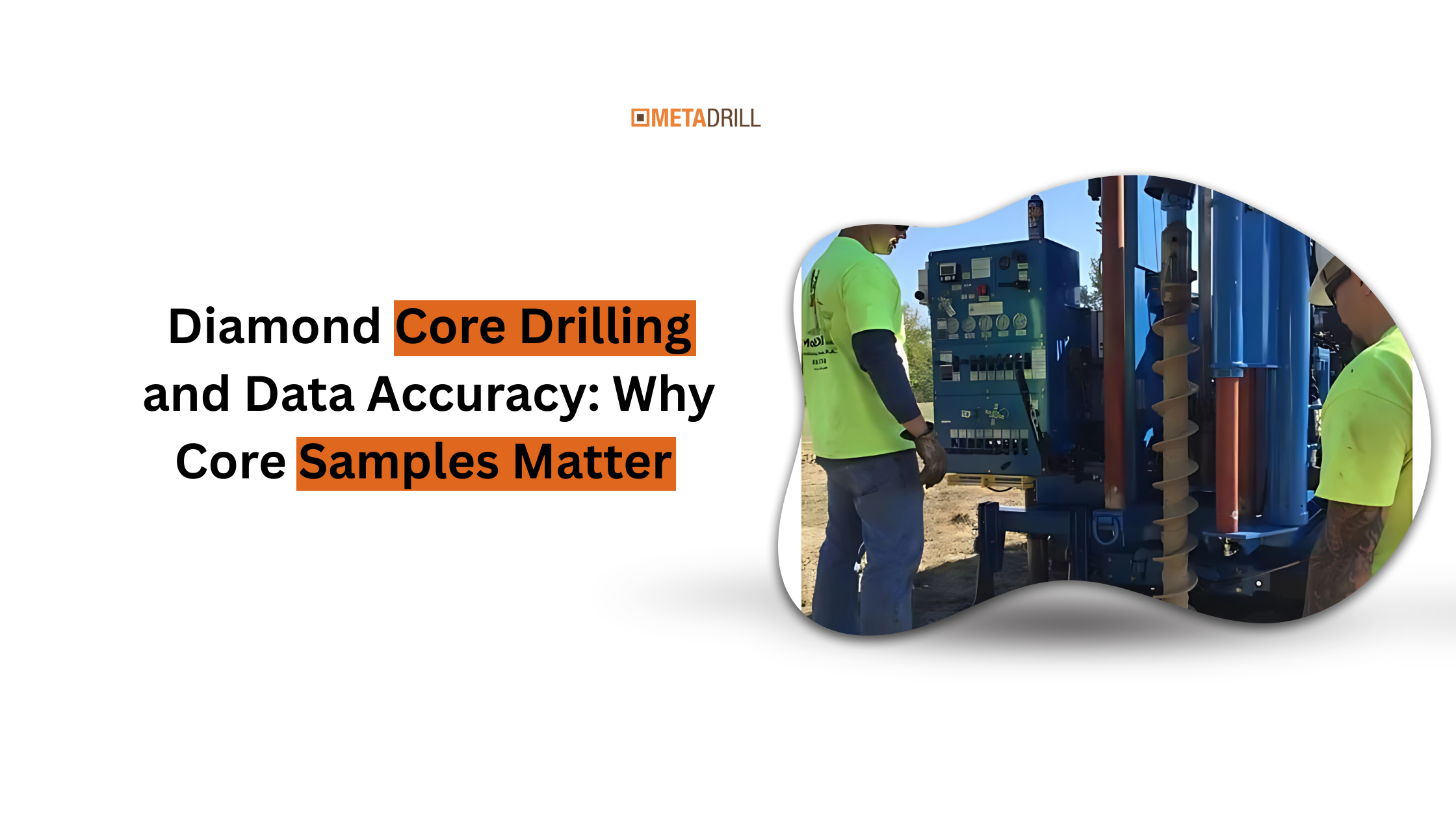Diamond core drilling is the best way to get clean and undisturbed samples from the ground. Other drilling methods can break or damage the samples. But diamond core drilling keeps all the details like rock layers, fractures, and veins safe. This gives engineers and geologists correct data for their work. With the right drilling rig equipment, these samples help people make better and safer project plans.
Engineering Accuracy into Every Stage
Good diamond core drilling needs the right tools, correct machine settings, and careful steps.
- Bit Selection and Drill Parameters
To get strong results, core drilling must use the right drill bit. There are different bits like surface-set, impregnated, and hybrid. The right choice depends on the hardness of the rock. Using the correct bit helps to avoid breaking the core and makes recovery easier. Things like torque, rotation speed, and weight on the bit must be set carefully. This makes the cutting smooth and improves the accuracy of diamond core drilling.
- Importance of Drilling Rig Tools and Equipment
The quality of drilling rig tools and equipment is very important. Straight rods, strong threads, and torque collars keep the drilling safe and balanced. Good drilling tools like barrels, split tubes, and wireline systems reduce damage to the samples. This way, the core truly shows what the rock looks like under the ground.
- Hole Stability and Fluid Management
This process also needs good drilling fluids. These fluids keep the borehole safe and stop it from breaking down. The right weight and mix of fluids also help remove cuttings. At the same time, the fluids protect the samples and keep them in the right condition for study.
Capturing Orientation and Geotechnical Data
In this method, oriented samples show the way veins, cracks, and rock layers go. This helps in mine planning, keeping slopes safe, and making correct rock models. Tests like RQD and UCS need these good samples. If the cores are broken or poor, the tests will not be right.
QA/QC and Data Traceability
QA/QC means checking quality and keeping data safe. In this method, each core is written in logs, photographed, labeled, and tracked. Extra samples (blanks and duplicates) are also tested to confirm lab results. This makes the data more trusted and correct.
Embracing Digital Logging
Digital logging is now common in diamond core drilling. Tablets, barcodes, and photos help reduce mistakes. Data can be sent in real-time to teams working in offices. New tools like sensors also track penetration and recovery while drilling. This makes the process faster and more accurate.
Value Over Cost
At first, diamond core drilling may look more costly than other methods. But it saves money in the long term. This is because it reduces re-drilling and gives clear data. Cores can also be stored safely for many years. These samples can be checked again later if needed. This long-term value makes core drilling a smart choice.
Practical Accuracy Checklist
Steps that improve recovery, data quality, and accuracy in exploration drilling:
- Match project goals (geotechnical, structural, metallurgical) with the right bit and rig setup.
- Set drilling parameters carefully and keep a record of drilling rig equipment usage.
- Do regular checks and repairs on drilling tools and rigs.
- Pick the best recovery method: triple-tube barrels for broken rocks, split tubes for weak rocks.
- Use the right fluids for each ground type.
- Mark cores correctly and follow the threading steps in diamond core drilling.
- Always use QA/QC rules and work with labs.
- Log cores digitally, take photos, and keep safe backups.
- Compare exploration drilling data with mapping and geophysical data for better results.
Environmental and Safety Considerations
A clean and safe drill site is especially important. It protects workers and keeps the samples in good condition. Proper storage, fluid handling, and clear labeling reduce mistakes. In diamond core drilling, safety and core quality always go together.
Transformative Impact of Core-Driven Insights
Many projects need accurate samples from diamond core drilling:
- High-grade veins are mapped and defined with clear core samples.
- Porphyry deposits are studied with alteration details from cores.
- Karst terrains are checked with continuous cores to find cavities.
- Geothermal and water projects use cores to test permeability.
In all these cases, diamond core drilling gives the best and most trusted data.
Conclusion
For mining, building, and water projects, diamond core drilling is the most reliable choice. It works best with strong drilling rig tools and equipment, well-maintained drilling tools, and advanced drilling rig equipment. With digital logging and QA/QC, exploration drilling becomes safer, faster, and more trusted. Companies like MetaDrill show how new technology and modern tools make these results even better. Still, the basic rule remains the same: good samples from diamond core drilling led to strong and accurate decisions.


